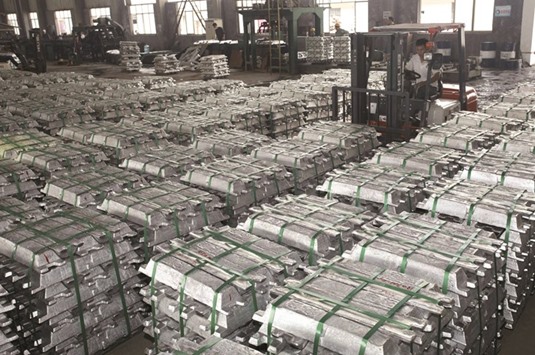Rio Tinto Group’s aluminium boss sees prices for the lightweight metal heading for an “extremely” volatile period, with uncertainty over when China will curb production helping to keep investors on edge.
“That’s really where the uncertainty is at the moment,” Alfredo Barrios said in an interview at Bloomberg’s Toronto office. “There’s no doubt that if you look at the supply side, if you look at the environmental issues, sooner or later that will change. But when is a question mark.”
China has ordered curbs on steel and aluminium output in as many as 28 northern cities during the winter heating season as it steps up its fight against pollution, people with knowledge of the matter said early in March.
Despite those reports, inventories on the Shanghai Futures Exchange continue to rise, touching the highest in more than a year. The increase is due to seasonal factors and production in the country currently rising at double-digit rates to take advantage of strengthening global aluminium prices, Jorge Vazquez, the managing director at Harbor Intelligence in Austin, Texas, said in a telephone interview.
Aluminium for delivery in three months has gained 28% in the past year on the London Metal Exchange to $1,959.50 a metric tonne. The price was up 16% in the first three months of 2017, the fifth straight quarter of gains, marking the longest streak since 1994.
The climb comes amid a recovery in global commodity prices in 2016 that continued this year amid the reports that China may cut capacity. While Rio Tinto doesn’t speculate on prices, Barrios said concerns about overcapacity and high inventory levels may put a lid on gains in the near term.
“There’s a number of factors which will dampen any price increase if it goes too far,” he said. “If you look at what are the fundamental reasons behind why prices are where they are, and how different they are from a year ago, it’s sometimes very difficult to see what has made aluminium be higher at all. What’s changed so radically in the last year?”
Barrios, 51, said Rio, the world’s second-largest mining company, expects US demand to remain strong at about 2.5% annual growth over the next 15 years, driven by purchases for the automotive industry, with a 60% increase in the use of aluminium in the sector in the next decade. Barrios said aluminium growth in the next 15 years will equal what the sector experienced in the past 40 years.
“We’re very optimistic on the demand side for North America, and I think everybody continues seeing demand growth, be it in China, be it other markets as well,” Barrios said.
The London-based company is committed to its operations in Quebec, he said, and has no intention of shifting its aluminium unit’s corporate offices out of Montreal.
“Our aluminium headquarters is in Montreal and it will stay in Montreal,” Barrios said.
Regarding the risk of protectionist trade policy from the new US administration, Barrios said the Canadian and US “aluminium industries are really complementary and co-dependent.”Rio’s 10,000 employees in Canada support 150,000 downstream jobs in the US aluminium industry, Barrios said. Any increased costs to import aluminium from Canada to the US would ultimately affect those US jobs, he said.
Barrios says the North American Free Trade Agreement has served both countries well, but there may be areas where the agreement could be enhanced.
“There might be things in CETA, TPP that are much more appropriate for today’s world that could be incorporated into a revised agreement,” he said, referring to the Canada-EU trade pact and the 12-nation Pacific trade agreement that the US quit earlier this year.

A worker drives a forklift to transport aluminium bars at a factory in China. Aluminium for delivery in three months has gained 28% in the past year on the London Metal Exchange to $1,959.50 a metric tonne. The price was up 16% in the first three months of 2017, the fifth straight quarter of gains, marking the longest streak since 1994.


